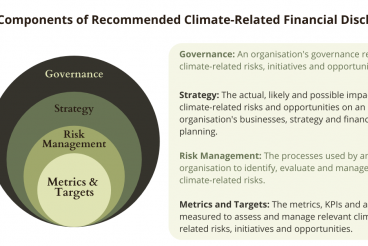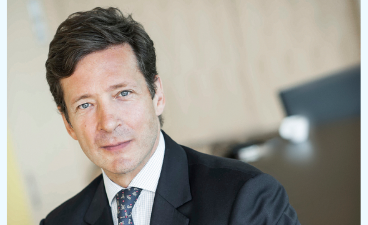There is a growing demand for SFDR advice. Indeed, with its launch on March 10 being merely the first stage of a growing global trend towards sustainability regulation, confusion abounds regarding the regime and its implementation. What will come next – and how can businesses prepare?

In the latest instalment of our Sustainability Matters interview series, three specialist lawyers – Lenoard Ng, Reyhan Güleç and Sebastiaan Hooghiemstra – offer insights and advice on the Sustainable Finance Disclosure Regulation, its enforcement and what to expect next.
This first part looks specifically at SFDR implementation, how the financial industry can expect it to evolve, and best compliance practice to avoid penalties. Parts 2 and 3 will appear soon.
How will SFDR implementation evolve as the requirements become more detailed in the future? What elements are most important to focus on?
Reyhan Güleç

Reyhan Güleç of Norton Rose Fulbright says financial market participants must not simply assume that sustainability risks are irrelevant to their business, thereby placing them outside the scope of the SFDR: “Prudence demands that they assess any disclosure requirements, taking Article 6 of the SFDR and related references into consideration.
“Now that the RTS are delayed, only Level 1 measures are in play. With respect to Level 2 measures, one of the biggest current challenges is the lack of relevant industry data, largely due to the absence of consistent and clear definitions. But this should no longer be a problem once the RTS for the SFDR and the Taxonomy Regulation, which will introduce the necessary clarification, are implemented.”
Güleç says many firms impacted by the SFDR have already engaged consultants for provision of data and analysis of the ESG status of their firms. Following completion of the RTS – buoyed by the clarifications from the Taxonomy Regulation – the availability of information in the market should become more satisfactory.
However, she warns: “Even at this late stage, uncertainty is widespread regarding the application of the SFDR regime to non-EU alternative investment fund managers and firms that provide MiFID services such as single managed account portfolio management.”
The industry consensus is that the required pre-contractual fund level disclosures under the SFDR will apply to non-EU AIFMs that have marketed a fund to EU investors under a national private placement regime. However, there is disagreement as to whether this also extends to the SFDR’s manager level disclosures, which must be made via a firm’s website.
Güleç says clarification on this issue also will depend on practice in each EU member state, as well as any related decisions by EU agencies.

Leonard Ng
“First, firms should decide whether they fall within the scope of the SFDR,” says Sidley Austin partner Leonard Ng. They must also identify whether their financial products fall within Article 8 of the regulation, covering products promoting environmental or social characteristics, or Article 9, dealing with products whose objective is sustainable investment or a reduction in carbon emissions, such as impact funds – in which case, significant additional disclosure obligations will apply.
“The final detailed rules for such disclosures are not yet in force,” he notes. “But since these rules are expected to apply from January 1, 2022, firms should become familiar with them in advance.
Ng adds: “It will likely be difficult for firms with products under Article 8 or 9 to back out of public and investor-facing statements even if they later determine they are not equipped to meet the additional disclosure requirements.”
Sebastiaan Hooghiemstra

Sebastiaan Hooghiemstra of NautaDutilh points out that in view of the delay to finalisation of the SFDR’s regulatory technical standards (RTS), the European Commission has indicated that financial market participants, including asset managers, and financial advisers must comply with the Level 1 principles set out in the regulation, ahead of an expected obligation to comply with the RTS rules from the beginning of next year.
He says any entities falling under the scope of the SFDR must integrate sustainability risks into their investment and risk management processes, consider significant adverse effects of investment decisions on sustainability factors in their due diligence processes – or explain why the manager is not doing so – and explain how the firm’s remuneration policy is consistent with the integration of sustainability risks. These responses must be summarised on the firm’s website.
Financial advisers must also consider sustainability risks in their advisory processes, remuneration policy, and – on a comply-or-explain basis – publish a relevant due diligence statement on their website.
Says Hooghiemstra: “Financial market participants must now cover key sustainability elements in their pre-contractual disclosures for all financial products, including alternative investment funds and managed accounts, including how they integrate sustainability risks, as well as their likely impact on returns. Otherwise theymustprovide an explanation as to why sustainability risks are not relevant.”
For now, he says, the focus is on compliance with the SFDR Level 1 requirements. For some obligations, no RTS details are required to ensure full compliance – for example, regarding integration of sustainability risks into investment decision-making processes under Articles 3, 5 and 6.
Hooghiemstra notes: “Certain obligations applicable at entity level, to fund managers and financial advisers, and at the financial product level to funds, will require finalisation of the RTS for full compliance.
“Furthermore, market participants and financial advisers must adopt most of the Taxonomy Regulation’s technical measures that will impact the consideration of sustainability risk factors – especially in selecting, measuring and monitoring sustainability risks.
He adds: “The European Securities and Markets Authority has called for action on ESG ratings and assessment tools to prevent the issues that emerged regarding credit rating agencies in the 2007-09 financial crisis. We should expect legislation in that area.”
How will compliance with the SFDR be enforced? How can asset managers avoid becoming liable for penalties?
It’s important to note that the SFDR does not incorporate any direct penalties for non-compliance. Since it does not have a dedicated sanction regime, compliance is set to be enforced through EU regulators’ existing oversight of asset management firms.
Says Ng: “A non-EU AIFM that markets a fund into the Netherlands under its national private placement regime will be subject to supervision by the Dutch Authority for the Financial Markets.”
Sectorial sanction regimes under specific EU financial legislation, as implemented by each member state, will apply. “Authorised AIFMs managing alternative investment funds need to publish SFDR information in their disclosure required by Article 23 of the AIFMD,” Hooghiemstra says. “Failing to provide the information required by the SFDR adequately will lead to [administrative] sanctions applicable under Article 23.”
Ng notes that one of the key aims of the SFDR regime is to combat so-called greenwashing. By requiring firms to make more detailed disclosures regarding ESG and sustainability issues, investors and regulators may be better placed to identify misrepresentation by firms overstating their green credentials.
In the initial stages, asset managers should expect regulators to take a big picture approach. Says Ng: “Provided firms seek to comply with the new regime on a best-efforts basis, it seems unlikely that any regulator would seek to apply penalties or other enforcement] measures.”
Hooghiemstra expects that due to the progressive implementation of the overall EU sustainable finance framework, coupled with the absence of relevant data and lack of regulation of ESG data providers, there will likely be a transitional phase.
“Given the delay to the detailed Level 2 rules on ESG and impact funds, the European Commission has indicated that firms will only be expected to comply with the Level 1 principles set out in the SFDR itself,” Ng says. In practice, there will likely be a reasonable degree of flexibility for company disclosures meeting the March 10 deadline.
Hooghiemstra warns, however, that asset managers should prepare for increasingly rigorous regulation as the new rules become bedded in.
— — —
Reyhan Güleç is an associate in the investment fund and finance practice of Norton Rose Fulbright, specialising in both AIFs and UCITS, and vice-chair of the Board Composition Committee and a member of the Sustainability Strategy for Boards Committee at the Institut Luxembourgeois des Administrateurs. She has published articles on sustainability and gender diversity at board level, and has been working on sustainable finance and ESG matters since 2015.
Leonard Ng is co-head of the UK/EU Financial Services Regulatory group at law firm Sidley Austin and a member of the firm’s executive committee. Based in London, Ng specialises in UK and EU financial services regulatory issues, and has worked closely with clients on sustainable finance and ESG regulation. He has been a member of the board of international hedge fund trade group the Managed Funds Association.
Sebastiaan Hooghiemstra is an associate in the investment fund and financial regulatory practice of Benelux law firm NautaDutilh. He is also a senior fellow at the International Centre for Financial Law & Governance at Erasmus University Rotterdam, where he lectures on UCITS and Alternative Investment Funds. Hooghiemstra, who focuses on fund formation and regulation, has authored more than 60 publications, mostly on investment fund law.
We hope you found this article useful. It is part of our Sustainability Matters series, in which we speak with experts across every facet of sustainability, ESG, sustainable finance, impact investing and more. Stay tuned for more insight from thought leaders, or click the links below to see the content we’ve already published.





